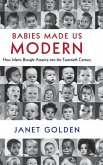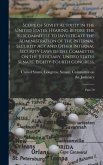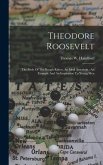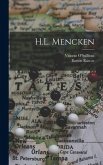Childbirth is a quintessential family event that simultaneously holds great promise and runs the risk of danger. By the late nineteenth century, the birthing room had become a place where the goals of the new scientific professional could be demonstrated, but where traditional female knowledge was in conflict with the new ways. Here the choice of attendants and their practices defined gender, ethnicity, class, and the role of the professional.
Using the methodology of social science theory, particularly quantitative statistical analysis and historical demography, Charlotte Borst examines the effect of gender, culture, and class on the transition to physician-attended childbirth. Earlier studies have focused on physician opposition to midwifery, devoting little attention to the training for and actual practice of midwifery. As a result, until now we knew little about the actual conditions of the midwife's education and practice.
Catching Babies is the first study to examine the move to physician-attended birth within the context of a particular community. It focuses on four representative counties in Wisconsin to study both midwives and physicians within the context of their community. Borst finds that midwives were not pushed out of practice by elitist or misogynist obstetricians. Instead, their traditional, artisanal skills ceased to be valued by a society that had come to embrace the model of disinterested, professional science. The community that had previously hired midwives turned to physicians who shared ethnic and cultural values with the very midwives they replaced.
Using the methodology of social science theory, particularly quantitative statistical analysis and historical demography, Charlotte Borst examines the effect of gender, culture, and class on the transition to physician-attended childbirth. Earlier studies have focused on physician opposition to midwifery, devoting little attention to the training for and actual practice of midwifery. As a result, until now we knew little about the actual conditions of the midwife's education and practice.
Catching Babies is the first study to examine the move to physician-attended birth within the context of a particular community. It focuses on four representative counties in Wisconsin to study both midwives and physicians within the context of their community. Borst finds that midwives were not pushed out of practice by elitist or misogynist obstetricians. Instead, their traditional, artisanal skills ceased to be valued by a society that had come to embrace the model of disinterested, professional science. The community that had previously hired midwives turned to physicians who shared ethnic and cultural values with the very midwives they replaced.
Borst's book...provides a historically accurate and intimate look into the lives of immigrant midwives in four Wisconsin counties from 1870 to 1920. The blend of social science theory, with its emphasis on gender, social class, ethnicity and culture, and historical demography, affords the reader a rare opportunity to examine the move from midwife-attended to physician-attended childbirth in the US within the context of a particular community...Well written, insightful, well documented, with 74 pages of endnotes and appendixes. An excellent work.
A superior book. What is new is the depth of the context and the descriptions of the actual, almost daily lives of the participants...It is one of the best books in medical history.
Well-researched, well-written accounts such as Catching Babies will help to address the many concerns of health care and society in the twenty-first century.
Borst weaves a fascinating narrative from birth certificates, midwife and physician licenses, city directories and census data, in addition to more traditional historical sources. Her work breathes fresh air into debates over what happened to midwifery shortly after the turn of the last century...One of the most fascinating aspects of Catching Babies is the way Borst reveals the complex shifts in public views of medicine...Catching Babies will be widely read and particularly useful to midwives, nurses, doctors and consumer groups interested in restructuring birth to reflect both good medical science and women's social and cultural needs.
What has caused [the change from midwife-attended to physician-attended childbirth] has been a matter of great historical debate in recent years. Focusing on the United States in the early twentieth century, where the shift took place earlier and more rapidly than in many other westernized countries, Charlotte Borst offers a refreshing insight into these questions...For anyone interested in the professionalization of medicine and the rise of obstetrics in childbirth Borst's book provides much food for thought...[H]er study not only provides a rich account of the changes in midwifery and obstetric training but also highlights the importance of looking at local communal and neighbourhood networks in shaping the acceptance of 'scientific' ideas in medicine and determining the types of birth attendant.
Borst deals expertly with the complexity of issues involved in trying to explain the relationship among the medical debate over midwifery, the professionalization of medicine, and the disappearance of midwives...[This book] is a significant addition to the growing literature on childbirth in America as well as the histories of medicine and immigrant life.
Borst has written an exacting history of midwifery and medicine at the turn of the twentieth century...Without a doubt this study is successful. The author's thorough use of various sources, including licensure records, educational information, and federal records, such as publications of the Children's Bureau, is outstanding. This impressive effort serves as a model for other studies to continue to explore detail and experience in the history of childbirth.
This meticulously researched and engagingly written contribution to the history of American midwifery is a fascinating account of the role midwives played in women's lives at the end of the nineteenth century and beginning of the twentieth. Charlotte Borst is impatient with the various historical narratives on the subject of childbirth that have assumed much with little evidence, and she sets the record straight on a number of historical issues in a study that is sensitive to gender, ethnicity, race, and class. Her book is a significant contribution to our understanding of the experience of birth in this country and of the professional and social contexts in which it occurred...Catching Babies is a fine study, a contribution not only to the history of medicine and science but to women's history and ethnic history more broadly.
A meticulously researched work...Borst offers a well-thought-out and nuanced analysis of how the conflict between professionalization and gender effected the transition to physician-attended births.
One of the strengths of Catching Babies is the opportunity it offers the reader to examine the experience of childbirth for lower class, immigrant, and rural women¿Borst's analysis explores the transition from midwives to physicians in urban and rural Wisconsin, explaining the motivations and choices of lower class and immigrant midwives and mothers¿Catching Babies is an excellent case study in the history of childbirth and professionalization; and the quantitative analysis offers a unique opportunity to study women who did not leave personal records, diaries, and letters about their experiences.
In other accounts of the decline of midwifery, historians have focused on the competition between physicians and midwives, suggesting that elitist physicians undermined the credibility of the midwife. Borst presents her own fresh and innovative view of the causes of this gradual change in birth attendants. She proposes that the inability of midwives to develop a truly professional approach to their craft contributed to their decline over these years, when both medicine and nursing began to develop as professions rather than vocations. The cultural, ethnic, and sex-based causes for this are well explored in the book...Catching Babies is clearly laid out, progressing from an analysis of midwifery to an evaluation of the changing training and focus of physicians. The arguments are easy to follow, well researched, and well substantiated by the depth of material presented. Borst's analysis of the influences of sex, class, and ethnic background is illuminating. The lessons she extracts from the Wisconsin experience can easily be extrapolated to the larger community. Catching Babies is a thought-provoking book, raising many questions about how we reached our present structure of care. Furthermore, it makes us consider how these same factors may influence the changes we are now struggling with in the fields of obstetrics and gynecology. This book is good reading for anyone interested in medical history, midwifery, or obstetrics, or anyone who simply wants to consider the influences of background, sex, class, and culture on our futures.
A superior book. What is new is the depth of the context and the descriptions of the actual, almost daily lives of the participants...It is one of the best books in medical history.
Well-researched, well-written accounts such as Catching Babies will help to address the many concerns of health care and society in the twenty-first century.
Borst weaves a fascinating narrative from birth certificates, midwife and physician licenses, city directories and census data, in addition to more traditional historical sources. Her work breathes fresh air into debates over what happened to midwifery shortly after the turn of the last century...One of the most fascinating aspects of Catching Babies is the way Borst reveals the complex shifts in public views of medicine...Catching Babies will be widely read and particularly useful to midwives, nurses, doctors and consumer groups interested in restructuring birth to reflect both good medical science and women's social and cultural needs.
What has caused [the change from midwife-attended to physician-attended childbirth] has been a matter of great historical debate in recent years. Focusing on the United States in the early twentieth century, where the shift took place earlier and more rapidly than in many other westernized countries, Charlotte Borst offers a refreshing insight into these questions...For anyone interested in the professionalization of medicine and the rise of obstetrics in childbirth Borst's book provides much food for thought...[H]er study not only provides a rich account of the changes in midwifery and obstetric training but also highlights the importance of looking at local communal and neighbourhood networks in shaping the acceptance of 'scientific' ideas in medicine and determining the types of birth attendant.
Borst deals expertly with the complexity of issues involved in trying to explain the relationship among the medical debate over midwifery, the professionalization of medicine, and the disappearance of midwives...[This book] is a significant addition to the growing literature on childbirth in America as well as the histories of medicine and immigrant life.
Borst has written an exacting history of midwifery and medicine at the turn of the twentieth century...Without a doubt this study is successful. The author's thorough use of various sources, including licensure records, educational information, and federal records, such as publications of the Children's Bureau, is outstanding. This impressive effort serves as a model for other studies to continue to explore detail and experience in the history of childbirth.
This meticulously researched and engagingly written contribution to the history of American midwifery is a fascinating account of the role midwives played in women's lives at the end of the nineteenth century and beginning of the twentieth. Charlotte Borst is impatient with the various historical narratives on the subject of childbirth that have assumed much with little evidence, and she sets the record straight on a number of historical issues in a study that is sensitive to gender, ethnicity, race, and class. Her book is a significant contribution to our understanding of the experience of birth in this country and of the professional and social contexts in which it occurred...Catching Babies is a fine study, a contribution not only to the history of medicine and science but to women's history and ethnic history more broadly.
A meticulously researched work...Borst offers a well-thought-out and nuanced analysis of how the conflict between professionalization and gender effected the transition to physician-attended births.
One of the strengths of Catching Babies is the opportunity it offers the reader to examine the experience of childbirth for lower class, immigrant, and rural women¿Borst's analysis explores the transition from midwives to physicians in urban and rural Wisconsin, explaining the motivations and choices of lower class and immigrant midwives and mothers¿Catching Babies is an excellent case study in the history of childbirth and professionalization; and the quantitative analysis offers a unique opportunity to study women who did not leave personal records, diaries, and letters about their experiences.
In other accounts of the decline of midwifery, historians have focused on the competition between physicians and midwives, suggesting that elitist physicians undermined the credibility of the midwife. Borst presents her own fresh and innovative view of the causes of this gradual change in birth attendants. She proposes that the inability of midwives to develop a truly professional approach to their craft contributed to their decline over these years, when both medicine and nursing began to develop as professions rather than vocations. The cultural, ethnic, and sex-based causes for this are well explored in the book...Catching Babies is clearly laid out, progressing from an analysis of midwifery to an evaluation of the changing training and focus of physicians. The arguments are easy to follow, well researched, and well substantiated by the depth of material presented. Borst's analysis of the influences of sex, class, and ethnic background is illuminating. The lessons she extracts from the Wisconsin experience can easily be extrapolated to the larger community. Catching Babies is a thought-provoking book, raising many questions about how we reached our present structure of care. Furthermore, it makes us consider how these same factors may influence the changes we are now struggling with in the fields of obstetrics and gynecology. This book is good reading for anyone interested in medical history, midwifery, or obstetrics, or anyone who simply wants to consider the influences of background, sex, class, and culture on our futures.








